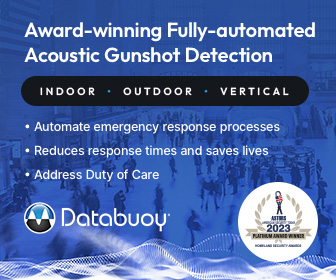
Guest Editorial by Jared Pane, Director of Solutions Architecture, Elastic
National security isn’t what it used to be.
In an era of expansive data creation, hyperconnectivity, artificial intelligence, and state-sponsored cyberattacks, the challenge of national security and other law enforcement missions is increasingly the challenge of data management.
More than ever, security requires accurate and timely analysis of sensitive information. Analysts seeking to thwart threats and solve crimes must have reliable access to the right data at the right time.
Legacy investigation methods often depend on expensive, proprietary IT tools to manage sensitive data. Those operational challenges have undermined criminal investigations, fraud detection, military operations, counterterrorism, and national security.
There is a better way. New, streamlined IT platforms enable law enforcement agencies to collect, analyze, manage, store, and retrieve data more accurately and efficiently.
Breaking with past practices, these sophisticated new tools advance intelligence analysis in transparent, collaborative, efficient, and secure ways. Unlike tools of the past, robust platforms are conducive to using artificial intelligence, enabling agencies to maintain control of their data.
(Cybersecurity is evolving. Protection needs to be dynamic. Investigation… faster. An effective response requires accurate context. Modernizing your security operations with Elastic extends security visibility, uncovers potential threats, and integrates with existing security systems — for a swift and proactive response. Courtesy of Elastic and YouTube.)
Spotlight on Cybersecurity
The emergence of digital government and digitized critical infrastructure has pushed cybersecurity into the spotlight. Fundamentally, cybersecurity concerns itself with protecting data and data infrastructure – simultaneously preserving the integrity of information without compromising the ability of investigators to use it.
In the case of law enforcement, that means being able to analyze intelligence and use the results to thwart adversaries.
Storing and analyzing data on a traditional closed platform fails to achieve these goals because only a small number of people with specialized expertise can decode the data and use the results to inform actions.
By comparison, new IT platforms enable law enforcement agencies to access data from the field – which informs decisions in real time. Law enforcement organizations with democratized, open-access data are better equipped to meet mission objectives.
The feasibility of such an approach requires a level of transparency and cross-team collaboration made possible by unified data platforms. Adding machine learning capabilities to the equation further advances law enforcement’s capabilities.
A Tale of Two Cities
A transparent, collaborative, flexible approach to intelligence analysis delivers many benefits: bolstering goodwill and trust among citizens, minimizing cybersecurity vulnerabilities, eliminating the need for third-party data management, and enabling data-driven decision-making.
Flexibility built into advanced data management platforms makes it possible to knock down data silos and provide analysts with information in multiple systems and jurisdictions, enabling analysts and investigators to share records, logs, and other data is a game changer.
To understand the importance of data management to law enforcement and security, consider what’s happening in Texas.
In May, a hacker group launched a ransomware attack against the City of Dallas, knocking out or compromising systems throughout the city’s network, including the Police Department, Fire and Rescue, 911 and 311 systems, the computer-assisted dispatch system (CAD), and the Dallas Municipal Court, which was closed for most of the month after the cyberattack.
The inability to access physical and digital evidence – internal police share drives and servers were compromised – has caused “horrendous delays,” according to news reports.
(More than $8 million has been spent restoring systems in the City of Dallas following a ransomware attack that closed many of the city’s public service offices for most of the month after the cyberattack. Courtesy of CBS Texas and YouTube.)
A few hundred miles away, a different story is unfolding in Harris County, Texas, the third most populous county in the United States. With most of the City of Houston within its boundaries, Harris County has more than 70 law enforcement and 50 fire agencies.
Until recently, law enforcement investigations used data retrieval and analysis processes that were slow and subject to errors. Investigators searched separate, siloed databases – for courts, records management, citations, computer-aided dispatch (CAD), license plates, and others – and manually linked the results.
The process ensured that the wheels of justice would turn slowly.
Today, Harris County’s investigators use a platform that aggregates and makes accessible data from many disparate sources. For the first time, law enforcement organizations can easily search across many data sources and correlate related information, including by location.
For example, a single search for a person could return 911 call transcripts, arrest records, related incidents, and the locations and people linked to the suspect — in a single view.
Machine learning tools identify similar cases, helping agents narrow the focus of investigations and establish patterns of activity that otherwise would be difficult to detect.
(As a leading platform for search-powered solutions, see how Elastic can help organizations, their employees, and their customers find what they need faster while keeping mission-critical applications running smoothly and protecting against cyber threats. Courtesy of Elastic and YouTube.)
What’s Next
Information technology is a boon for society. It drives efficiencies, democratizes knowledge, and builds communities.
However, the exploitation of IT networks and tools has enabled criminals to expand the reach of their activities into ransomware, data theft, financial fraud, and misinformation campaigns.
Law enforcement needs tools that aggregate and analyze siloed data from many sources to level the playing field. Advanced data analysis platforms allow law enforcement agencies to accelerate investigations by providing the time-sensitive data to solve crimes and save lives.
About the Author

For the past 20+ years, Jared Pane has dedicated himself to the Public Sector, helping State, Local, and Education IT teams build successful operations around Open Source and next-gen technologies.
As the Director of Solutions Architecture, for Elastic, the company’s culture defines who they are and why so many people use them to bridge the gap in their IT environments.
At Elastic, they disrupt the tech space by partnering with local government agencies that need and want to do more with less.
Jared says he loves data, meeting new people, developing new relationships, solving problems, and contributing to the Public Sector’s overall success.
Related Technologies…
Mark43 Returns to Compete in 2023 ‘ASTORS’ Homeland Security Awards Program

American Security Today’s Annual ‘ASTORS’ Awards is the preeminent U.S. Homeland Security Awards Program, and now entering it’s Eighth Year, continues to recognize industry leaders of Physical and Border Security, Cybersecurity, Emergency Preparedness – Management and Response, Law Enforcement, First Responders, as well as federal, state and municipal government agencies in the acknowledgment of their outstanding efforts to Keep our Nation Secure.
Community safety has changed in the last 30 years however, technology vendors haven’t.
(Learn how Mark43 provides a refreshing, proven enterprise implementation experience and product for over 200 public safety agencies of all sizes, with a special competency for major agencies. Courtesy of Mark43 and YouTube.)































